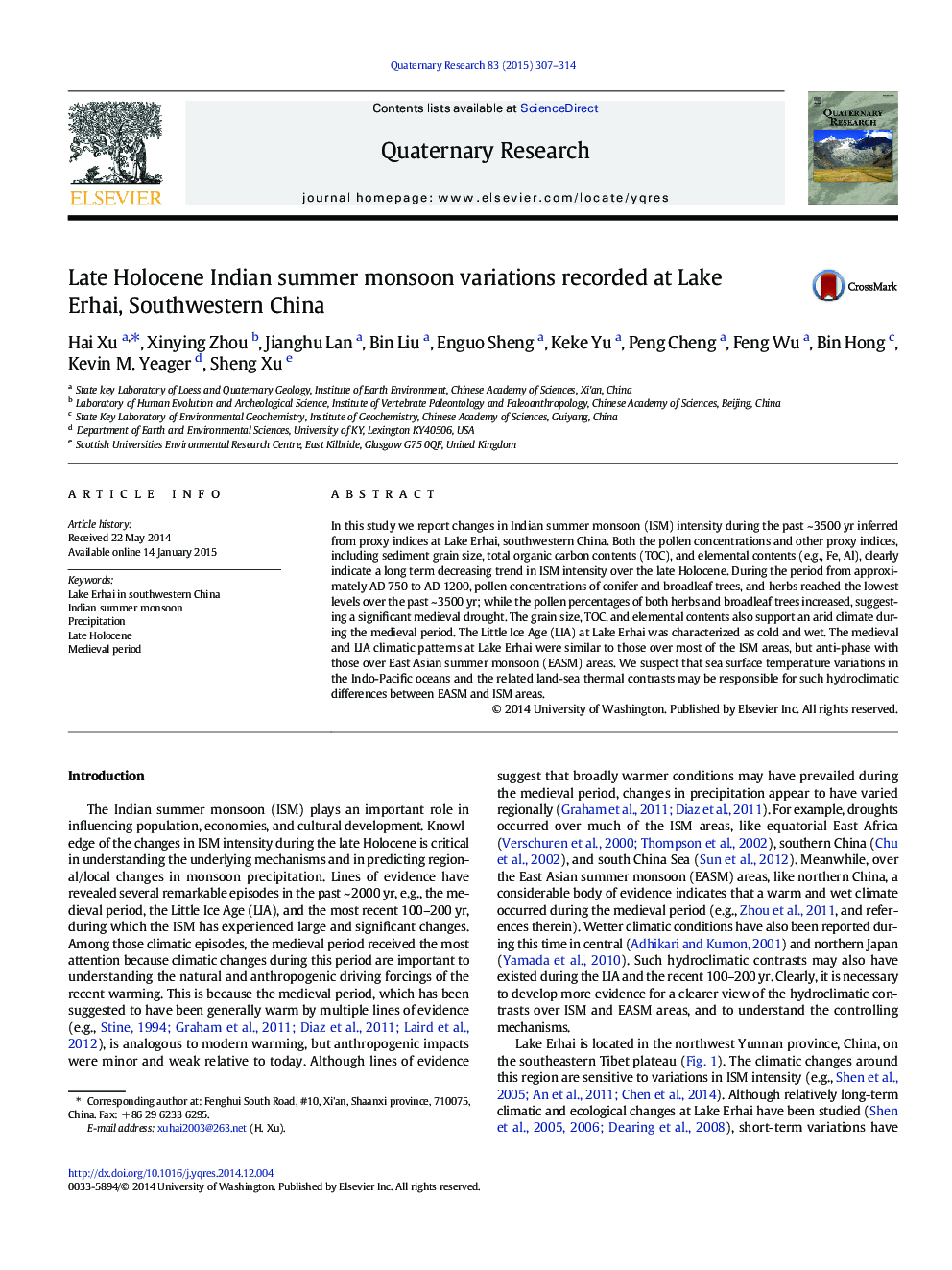| Article ID | Journal | Published Year | Pages | File Type |
|---|---|---|---|---|
| 1045145 | Quaternary Research | 2015 | 8 Pages |
Abstract
In this study we report changes in Indian summer monsoon (ISM) intensity during the past ~Â 3500Â yr inferred from proxy indices at Lake Erhai, southwestern China. Both the pollen concentrations and other proxy indices, including sediment grain size, total organic carbon contents (TOC), and elemental contents (e.g., Fe, Al), clearly indicate a long term decreasing trend in ISM intensity over the late Holocene. During the period from approximately AD 750 to AD 1200, pollen concentrations of conifer and broadleaf trees, and herbs reached the lowest levels over the past ~Â 3500Â yr; while the pollen percentages of both herbs and broadleaf trees increased, suggesting a significant medieval drought. The grain size, TOC, and elemental contents also support an arid climate during the medieval period. The Little Ice Age (LIA) at Lake Erhai was characterized as cold and wet. The medieval and LIA climatic patterns at Lake Erhai were similar to those over most of the ISM areas, but anti-phase with those over East Asian summer monsoon (EASM) areas. We suspect that sea surface temperature variations in the Indo-Pacific oceans and the related land-sea thermal contrasts may be responsible for such hydroclimatic differences between EASM and ISM areas.
Related Topics
Physical Sciences and Engineering
Earth and Planetary Sciences
Geology
Authors
Hai Xu, Xinying Zhou, Jianghu Lan, Bin Liu, Enguo Sheng, Keke Yu, Peng Cheng, Feng Wu, Bin Hong, Kevin M. Yeager, Sheng Xu,
